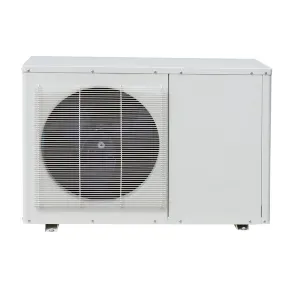How Does Air Source Heat Pump Heating Work?
While many use air source heat pumps, understanding how they work remains a mystery to most. So, why are they so cost-effective for heating? Let's explore their principles.
Air source heat pumps work by utilizing a small amount of electricity to power a compressor, which circulates and compresses the air's free heat energy. This compressed high-temperature heat is then transferred to cold water in a water tank through heat exchange, raising its temperature. The heated water is then circulated indoors, providing heating via underfloor heating, fan coils, radiators, etc.

Despite their energy efficiency, misunderstandings during purchase, installation, and usage often lead to inefficiencies, resulting in increased energy consumption. Here are some energy-saving tips for air source heat pumps:
1. Choose the correct size for the main unit based on heating area and hot water supply. Undersized units will strain to meet demands, leading to inefficiencies.
2. Opt for variable frequency air source heat pumps whenever possible. These adjust their operation frequency based on room temperature fluctuations, reducing electricity consumption during low-frequency modes.
3. Ensure proper installation of the main unit in a well-ventilated area, free from clutter. Obstructions can hinder the unit's ability to absorb heat from the air, reducing its heating efficiency and increasing energy consumption.
4. Select the appropriate heating terminal. Different terminals, such as underfloor heating, fan coils, and radiators, have varying energy consumption and heating effectiveness. Underfloor heating is the most efficient, while radiators are the simplest to install. Fan coils offer both heating and cooling capabilities.
Understanding and implementing these tips can maximize the energy-saving potential of air source heat pumps and ensure efficient heating in homes.

Comments